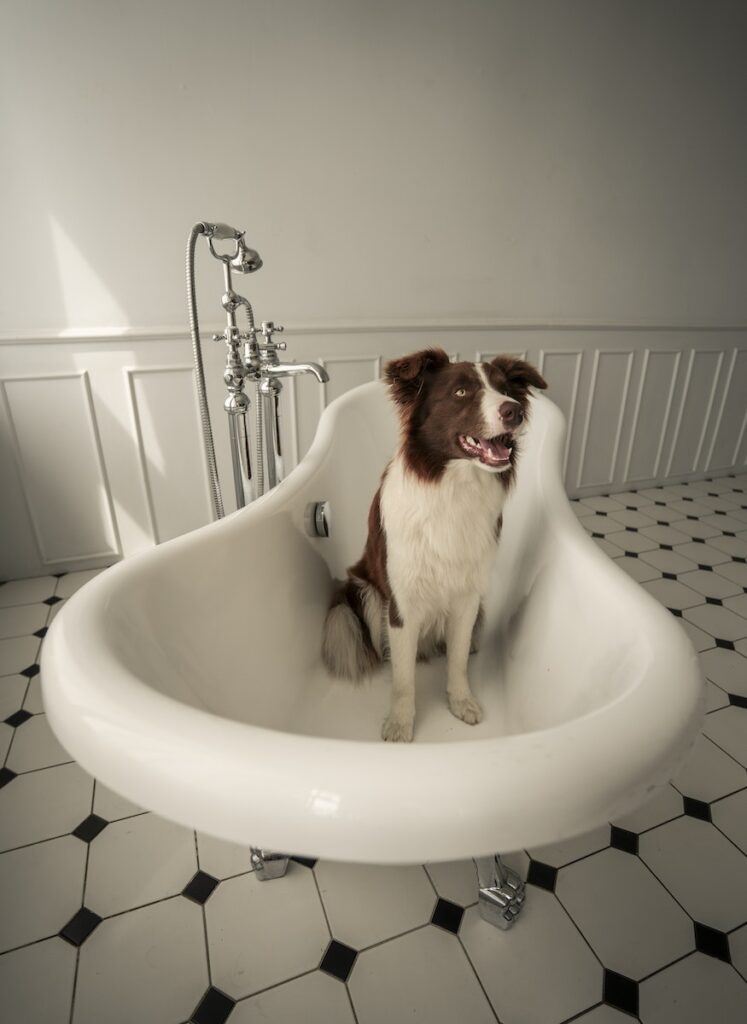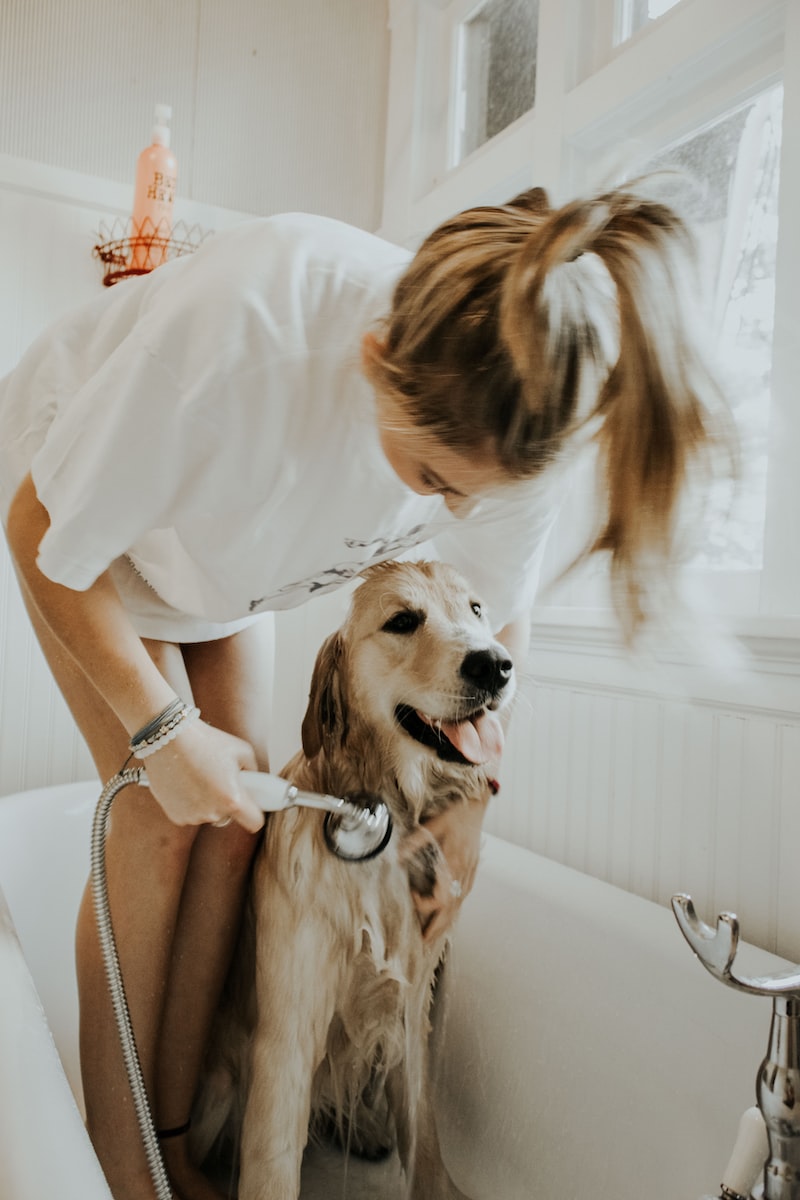If dogs could make an exhaustive list of things they can do without bathing, it would surely be included on the list. Dogs who love bathing to play in the water and become dirty aren’t excited about getting bathed. In this article, we’ll provide you with some tips on bathing your dog, as and information on how to install an area for dog washing at home.
The most important thing to make this bathing process as relaxing as you can for your pet is to prepare him and ensure him that it’s a safe and even enjoyable exercise. One of the most important aspects is selecting the appropriate location. Self-service dog washing is a space with everything you require. But, your dog may prefer being clean at your home. A small dog could be washed in a sink, while a larger dog could be cleaned in a bathtub or on the outside.
How often should I bathe my dog?
A lot of dog owners, particularly new ones, are unsure of when they should bathe their pets. Certain pet owners adhere to the same routine that includes bathing and grooming their pets each week. For some, bathing time is when the dog’s scent begins to linger throughout the home. It’s true that, depending on the breed of your dog, you might not have to bathe him as often. Certain breeds with short hair, for instance, don’t have a lot of furs, so they can be able to get by with a once-a-week massage using gloves and a long bath once per month. Regular bathing can deplete the dog’s natural oils. They are the source of the smell that dogs emit however they also protect your skin. If you bathe your dog too often, your dog could suffer from chronically itchy and dried skin that can lead him to frequently scratch his own skin.
What Can I Use to Wash My Dog?
Of course, if your dog enjoys the outdoors, playing and rolling in the mud and dirt and mud, you’ll have to bathe him more frequently. It’s fine so it’s not using dish soap or products specifically designed for human use. Dermatologists from the veterinary field recommend that mild hypoallergenic soap specially designed for use in veterinary medicine is all you require. “Formulated for veterinary use” refers to a product made to function with a dog’s body chemistry, which is distinct from the chemistry of human hair and skin. Although dishwashing soap and your preferred shampoo may be able to remove the dirt and odor from your dog’s coat, they can also remove essential oils from their coat. This could cause irritation to their skin or trigger negative reactions.
The experts say that it’s safe to bathe your dog using veterinary shampoo every week. However, when the shampoo you’re using is containing insecticide or medication, you should follow the directions of your veterinarian. Shampoos prescribed by your doctor treat specific ailments and may require bathing more or less frequently than you do normally.
Bathing Tips

If you decide to wash and groom your pet at your home take the necessary items you’ll require-shampoo, a comb or brush sponge, a hand towel drying towel, as well as treats before you go to grab something to eat after your dog’s wet.
12 Dog Bathing Steps to Follow
When it is time for your pet to clean and freshen up be sure to follow these guidelines:
- Make sure to brush your dog’s coat prior to bathing. Wet fur is more slippery than dry fur, and an untidy coat will be more difficult to remove and can take longer to dry. This will help you save time and also save your pet from uncomfortable brushing.
- Place a mat or other flooring beneath your dog to ensure that he doesn’t fall.
- When your dog seems extremely anxious ask a pet sitter who can keep the dog off-guard while you take care of your pet.
- If your dog doesn’t attempt to get away, take off the collar and scrub the fur under it. If you have to keep him tied to you, install a waterproof collar for him.
- If you’re concerned about water getting into the dog’s ears, put cotton balls inside his ears.
- Make sure the water source is at a temperature lukewarm at low pressure prior to applying water to the coat of your dog.
- Cleanse your dog, but make sure that you don’t touch his head. Make use of a moist washcloth to wash his face.
- Clean your dog thoroughly including the stomach, armpits, tail, and paws.
- Make sure your pet is thoroughly rinsed and repeat making sure to avoid the head area.
- When you wash the shampoo out of your dog, prepare for your dog to shake himself dry. In casual clothing for bathing your dog is a great idea. After bathing, wipe your dog dry using towels. If you’re at a pet wash, you may make use of one of their dryers. Be aware that the loud noises they can make may scare dogs. If you’re in your home, you could use hair dryers.
- Some dog owners like to wash their dog’s ears and trim their nails in bathing. It’s convenient, however for dogs who don’t like either, or even both jobs, it is best to do these tasks at a different time.
- After you’ve finished, give your dog a high-five and treat him to a tasty reward for a job well accomplished!
Consider Installing a Dog-Washing Station

Certain dog owners aren’t keen to contaminate their sinks or bathroom, so they decide to construct a special wash area for their pets. The ideal time to set up the dog wash station is during a renovation or the construction of a new house, however placing one in an existing laundry room or mudroom room shouldn’t be too difficult so long as the plumbing is installed.
A pet-washing facility that is added to your home is similar to adding a second bathtub or shower. General contractors, architects, or designers will design the design and then possibly assign the task to the tile installer and plumber. If you don’t hire a contractor, begin with the plumber, who will place in the basin or shower pan set up the drain, and connect the fixtures. When tile installation is required an installer will install and grout tile on the tub’s walls.
In general, showers with step-ins are more suitable for large dogs. Tubs with elevated sides are suitable for small dogs and can be elevated. The benefit of having an elevated bathtub is that it can reduce the strain of having to bend down to clean your pet. The ramps or steps can assist dogs to get in an elevated tub.
Some features that you could add are the possibility of a handheld showerhead that is flexible and a clip to the wall to secure your dog while bathing as well as a shelf to store the necessary items. Dog-washing stations that are specifically designed for dogs range from practical and basic to more elaborate. The price naturally increases based on the material that is included in yours.
bathing their dog can be an essential part of keeping him clean, and keeps your dog healthy, and happy. Insurance for pets might appeal to these kinds of dedicated pet owners. If you’re not currently having insurance on your animal, think about an insurance company with a high rating that can take care of the majority of your pet’s unexpected vet expenses. Pets Best offers flexible coverage options, including no annual or lifetime limitations.









Leave a Comment